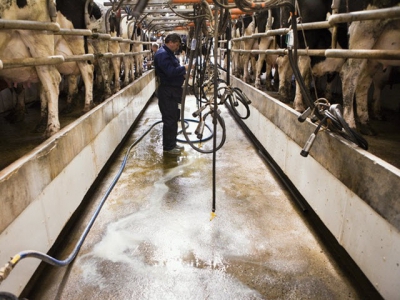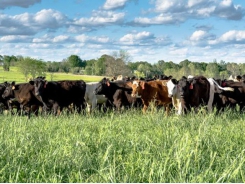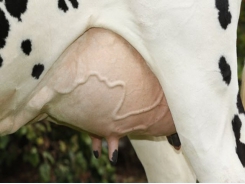US dairy sector concentrates to lower feed, production costs, expand exports

A Rabobank report finds increased consolidation and expansion in the US industry.
“Every five years we get the ag census data from the USDA that gives us kind of a unique look, in terms of dairy, mostly in terms of breaking down by farm size where most of the national herd is held,” said Ben Laine, report author and dairy analyst, Rabobank.
Most recently, the data shows an increase in dairy size, along with changes to location, he told FeedNavigator.
Most US milk cows – about 55% - are on dairies with more than 1,000 cows, while previously about 20% of cows were on farms of that size, he said in the report. The majority of milk production, 58%, is also generated on farms with more than 1,000 cows.
The larger facilities may have the ability to reduce feed costs by 12%, operating costs by 20% and overhead by 45% on a per hundredweight basis when compared to smaller operations, according to report data.
Larger dairies are less likely to rely on feed they grow, said Laine.
“Most of the large-scale operations are relying heavily or exclusively on purchased feed,” he added.
The consolidated dairy farm may also be big enough to have some negotiating power within the feed industry, he said. Purchasing a large and consistent amount of feed may allow for long-term planning and contracting to manage some of the feed price volatility.
Focus on farm, market location
As dairy farms increase in size, they have shifted from traditional locations nearer population centers to areas potentially more familiar with larger-scale animal production, said Laine.
“The trend of consolidation isn’t something that’s necessarily changed – we’ve seen that kind of gradually happening over the last couple of decades,” he said. “But you do see what that means in terms of the landscape – you see dairy production centers being in places that aren’t the traditional dairy production centers that we thought of historically, places like the upper Midwest or Northeast.”
“The majority of milk production is coming from places that we hadn’t historically thought of – places like Idaho [and] now Texas is also a major one,” he added.
The move toward increased dairy size is expected to continue to grow production for the export market, he said. “The domestic market is still critical, it’s still high value, but it’s a mature market,” he added.
“If we’re going to continue growing the volume of production the outlet for that will be in the global market and that’s still a commodity market,” Laine said. “The advantage there is going to be the ability to make high volumes of high-quality milk at a low cost, and that’s something that some of the larger operations are excelling at.”
Although there have been some challenges around exports recently given the trade disputes, new tariffs and the renegotiation of deals, the export market for US dairy has been growing for the past several years, he said. “Long-term, I do expect that to continue,” he added.
“There are some trade disruptions elsewhere that are providing some opportunities for US exports and there are others that could be putting up hurdles for us.”
Implications of producer concentration
However, the concentration of dairy production does have a few challenges, especially in terms of consumer perception, he said. “If there’s general backlash from consumers against that type of production, that can have some implications."
Additionally, the move toward larger facilities brings added pressures for smaller producers, he said.
“The advantage in the past was always being close to population centers so you have a lot of small farms relatively close to major centers of population in the Northeast serving the East Coast and places like the upper Midwest.
"But the small farms can have a difficult time competing on a cost basis with some of the larger ones that have lower costs per unit of production,” said Laine.
There are some opportunities for smaller producers in niche markets or through the careful management of costs or through technology use, he said.
“There are still ways to make it work at different scales, and I think there’s a benefit to having a diverse production base, but [the consolidation trend] does add pressure on smaller-scale producers."
This is an industry in a constant state of flux, he said. If producers lose sight of that they can risk falling behind, he added.
Related news
Tools

Phối trộn thức ăn chăn nuôi

Pha dung dịch thủy canh

Định mức cho tôm ăn

Phối trộn phân bón NPK

Xác định tỷ lệ tôm sống

Chuyển đổi đơn vị phân bón

Xác định công suất sục khí

Chuyển đổi đơn vị tôm

Tính diện tích nhà kính

Tính thể tích ao




 Evidence-based metritis therapy in dairy cows sought
Evidence-based metritis therapy in dairy cows sought  Robotic pills could monitor dairy cow health
Robotic pills could monitor dairy cow health